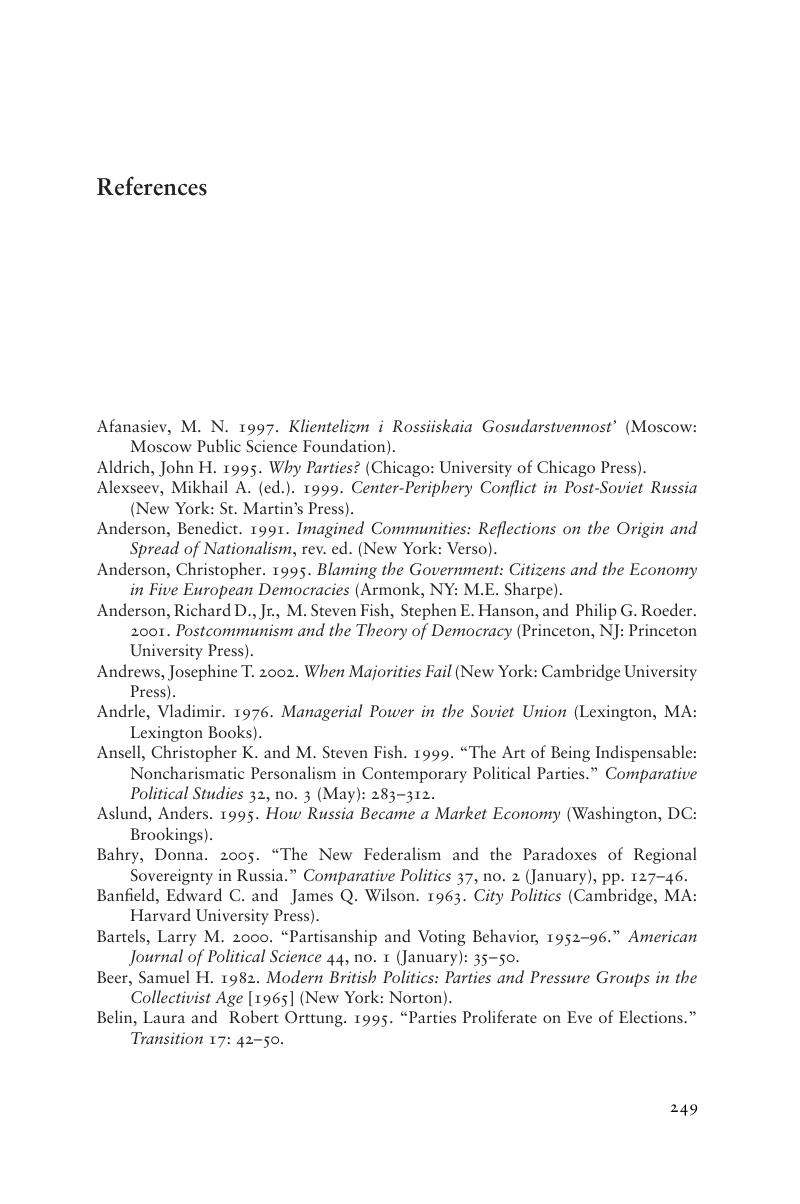Book contents
- Frontmatter
- Contents
- Acknowledgments
- 1 Electoral Markets and Russia's Political Smorgasbord
- 2 Party Entrepreneurship in Russia's Electoral Market 1989–2005
- 3 How Much Party Is in the Party System?
- 4 Electoral Markets and Party Substitutes in Russia : Origins and Impact
- 5 Parties and Party Substitutes : Determining the Balance
- 6 Conclusion : The Market Model and Theories of Parties, National Integration, and Transitions from Authoritarian Rule
- References
- Index
- References
References
Published online by Cambridge University Press: 06 July 2010
- Frontmatter
- Contents
- Acknowledgments
- 1 Electoral Markets and Russia's Political Smorgasbord
- 2 Party Entrepreneurship in Russia's Electoral Market 1989–2005
- 3 How Much Party Is in the Party System?
- 4 Electoral Markets and Party Substitutes in Russia : Origins and Impact
- 5 Parties and Party Substitutes : Determining the Balance
- 6 Conclusion : The Market Model and Theories of Parties, National Integration, and Transitions from Authoritarian Rule
- References
- Index
- References
Summary

- Type
- Chapter
- Information
- Why Not Parties in Russia?Democracy, Federalism, and the State, pp. 249 - 264Publisher: Cambridge University PressPrint publication year: 2005



